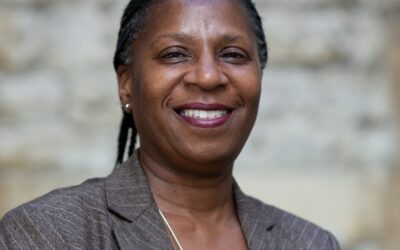Orri’s Specialist Eating Disorder Dietitian, Beth, explores eating disorder stereotypes and stigma faced by the Black community, and shares recommendations for challenging the white narrative.
Eating disorders and the black community
When we think about the stereotypical presentation of an eating disorder, most of us will be holding in mind an image of a thin, young, white, middle-class female.
This stereotype is driven by the media including film and documentaries. The large majority of key icons and celebrities who have publicly shared their battles also fit this stereotype such as Princess Diana & Karen Carpenter.
These stereotypes in turn, impact the processes of screening and identification, which further reinforces the stereotype due to the types of individuals being more likely to seek support and gain access to treatment.
A 2019 study based in America illustrates the importance of challenging this stereotype. In contrast to the belief that eating disorders affect middle/upper class individuals, this study highlighted an association between food insecurity and ED symptoms with the most severe food insecure group reporting significantly higher levels of overall ED pathology and dietary restraint (Becker, et al 2019).
Impact of the eating disorder stereotype
Those who do not fit the stereotypical representation of an eating disorder may be less likely to perceive a need for treatment, with a study highlighting that ethnic minorities are significantly less likely to seek help from binge eating disorder (Coffino, Udo and Grilo, 2019). Becker et al., 2003 also demonstrate that people of colour with self-reported eating and weight concerns are significantly less likely to be asked by a doctor about eating disorder symptoms.
It’s also important to consider the impact of stereotypes on research. A large majority of eating disorder research is based on samples identified via those accessing some kind of treatment. This means there is a risk and likelihood of the black experience being excluded from research itself. Much research also fails to breakdown experiences between different ethnicities and the statistics of the ethnic make-up of the samples, is often excluded.
Recognising the impact of stereotyping is only part of the solution. It’s not enough to comment on the numbers of black people suffering. We need to take a step further and actually unpick and think about the complex links between body image, food, race & culture. We need to understand how cultural differences can contribute to eating disorder development/symptom perpetuation. If the white experience of eating disorders continues to be put at the centre of the narrative we end up with a screening and treatment system that is based only on recognising and treating this presentation of the illness.
Eating disorders within the black community
When looking at self-reported bulimic tendencies and symptoms, a 2011 study based in the US, suggested black girls were significantly more likely to engage in behaviours. However, when it came to the point of diagnosis this was more likely to match the eating disorder stereotype with white individuals being more likely to be diagnosed (Goeree, Ham and Iorio, 2011).
Taylor et al. suggest that African Americans are less likely to be diagnosed by anorexia nervosa, however, onset may be earlier and persistence longer. Although this study does not delve further into why this may be – we have to contemplate and consider the impact of stereotyping and lack of access to treatment as a possible implication here (Taylor et al., 2007).
We know that hospital admissions for eating disorders have risen dramatically in the last few years, however, this has been far more significant amongst ethnic minorities. According to NHS data, hospital admissions for eating disorders rose by 30% in white ethnicities, 216% in Black Africans and 53% in ethnic minorities as a whole from 2017-2020 (Thomas, 2020). In some aspect, this may indicate a level of improvement in recognition, however, we should also consider whether it is taking a significant decline in function to the point of needing a hospital admission for recognition to occur.

Why are eating disorders going unrecognised within the black community?
- Lack of representation in mainstream media
- Lack of representation in research
- Lack of access to treatment – impact of lack of diagnosis and financial constraints
- We know that black individuals are disproportionately more likely to be from a lower socioeconomic background in this country. We also know the constraints around funding and eating disorder treatment, with more individuals having to consider private input. Again highlighting a further barrier to treatment access that will be exacerbated for those from ethnic minority backgrounds.
4. Distrust of the healthcare system amongst ethnic minorities (Razai, Osama, McKechnie and Majeed, 2021)
- Research suggests that there is a general lack of trust in the healthcare system amongst ethnic minority groups – the recent difference in COVID vaccine uptake has shed light on this. Reasons for this may include, previous unethical healthcare research in black populations, under-representation in research & trials and negative experiences within a culturally insensitive system.
5. Cultural context not considered within treatment (Goode-Cross and Grim, 2014)
- If treatment is not designed to take into consideration the impact of cultural differences on symptoms – individuals may understandably feel less safe in bringing these aspects of their illness to treatment spaces in fear of a clinicians lack of understanding. This is further compounded by a lack of black clinicians, including dietitians within the field of eating disorders with research suggesting black individuals feel more comfortable exploring these themes with clinicians who look like them.
6. General invisibility of eating disorders other than anorexia nervosa
- Research suggests black individuals are more likely to suffer with binge eating disorder and bulimia than anorexia nervosa. Therefore, the stereotype of eating disorders consisting only of anorexia as well as, weight stigma and the assumption of sufferers existing in smaller bodies come together to discriminate against black individuals.
7. Assumption that the thin ideal is irrelevant (Fernandes, Crow, Thuras and Peterson, 2009)
- The impact of views around the thin ideal and eating disorder prevalence in the black community is problematic for two reasons. The first, is the assumption that internalization of the thin ideal is present for all eating disorder sufferers and the only driving factor for onset. The second is the assumption that this thin ideal is irrelevant in the black population. Whilst some studies suggest it is less present, others indicate similar or higher levels of body dissatisfaction and suggest that for black people highly acculturated to white culture, drive for thinness is higher.
8. Stigma of mental illness in the black community – the idea of what it means to present as a strong black woman/man (Mantovani, Pizzolati and Edge, 2016; Watson-Singleton, 2017)
- Although the narrative around mental illness may be changing, it continues to be seen as a sign of personal weakness and open communication regarding mental health is often avoided in the black community. Further, to this, the narrative of being a strong black individual, which is upheld both within the black community itself and reinforced by mainstream media is a further barrier to seeking support.

Racism, trauma and eating disorders
The links between trauma and eating disorder development are clear and well-studied. There is also a clear body of work, looking at racism as a form of trauma and major life stressor.
However, research directly looking at the impact of the stress of racism on disordered eating is sparse.
A literature review, published in 2021, suggested that racial teasing and discrimination were associated with disordered eating, disturbed body image, and depressive symptoms primarily among females across multiple races. However, highlighted the need for longitudinal studies to examine risk factors and the likelihood of eating disorder onset over time (Swann et al, 2021).
The experience of racial discrimination, is likely to impact mind & body connection, one’s sense of self and encourage a desire to conform to what is seen as the ‘norm’ – all of which are often seen as precipitating/perpetuating factors in eating disorder development.
What can we do as clinicians to challenge the white narrative in eating disorders?
- Understand, challenge and work on our own internal bias – this is key. We cannot expect to challenge the systems we work within if we aren’t able to challenge ourselves.
- To challenge the stereotypes that may exist amongst individuals or systems we work with – Appointing diversity equity and exclusion policies/leaders within the work place, including race & ethnicity when discussing/presenting clients. Think about and advocate for challenging the lack of diversity amongst eating disorder clinicians.
- To never assume that an individual may be thinking/behaving in a particular way based on their race alone.
- Challenge weight stigma in relation to eating disorder recognition.
- To always hold in mind, the potential role of racism in eating disorder development and to create spaces that feel safe for individuals to explore this.
- Report on race & ethnicity in research & statistics.
- Give space to voices of those from marginalized communities to share their experiences.
- We need more research! (Especially in the UK – research is minimal and based upon findings in the US)
References
Becker, A., Franko, D., Speck, A. and Herzog, D., 2003. Ethnicity and differential access to care for eating disorder symptoms. International Journal of Eating Disorders, 33(2), pp.205-212
Becker, C., Middlemass, K., Gomez, F. and Martinez-Abrego, A., 2019. Eating Disorder Pathology Among Individuals Living With Food Insecurity: A Replication Study. Clinical Psychological Science, 7(5), pp.1144-1158.
Coffino, J., Udo, T. and Grilo, C., 2019. Rates of Help-Seeking in US Adults With Lifetime DSM-5 Eating Disorders: Prevalence Across Diagnoses and Differences by Sex and Ethnicity/Race. Mayo Clinic Proceedings, 94(8), pp.1415-1426
Goeree, M., Ham, J. and Iorio, D., 2011. Race, Social Class, and Bulimia Nervosa. IZA Discussion Paper, 5823
Razai, M., Osama, T., McKechnie, D. and Majeed, A., 2021. Covid-19 vaccine hesitancy among ethnic minority groups. BMJ, p.n513
Swann, C., Pachter, L., Liverlight, E. and Gannon, M., 2021. Race and Disordered Eating: A Narrative Review of Current Literature. Phase 1, Paper 2.
Taylor, J., Caldwell, C., Baser, R., Faison, N. and Jackson, J., 2007. Prevalence of eating disorders among blacks in the national survey of American life. International Journal of Eating Disorders, 40(S3), pp.S10-S14










